Mon corps, où es-tu ?
Exposition virtuelle
24th April - 1st May 2021
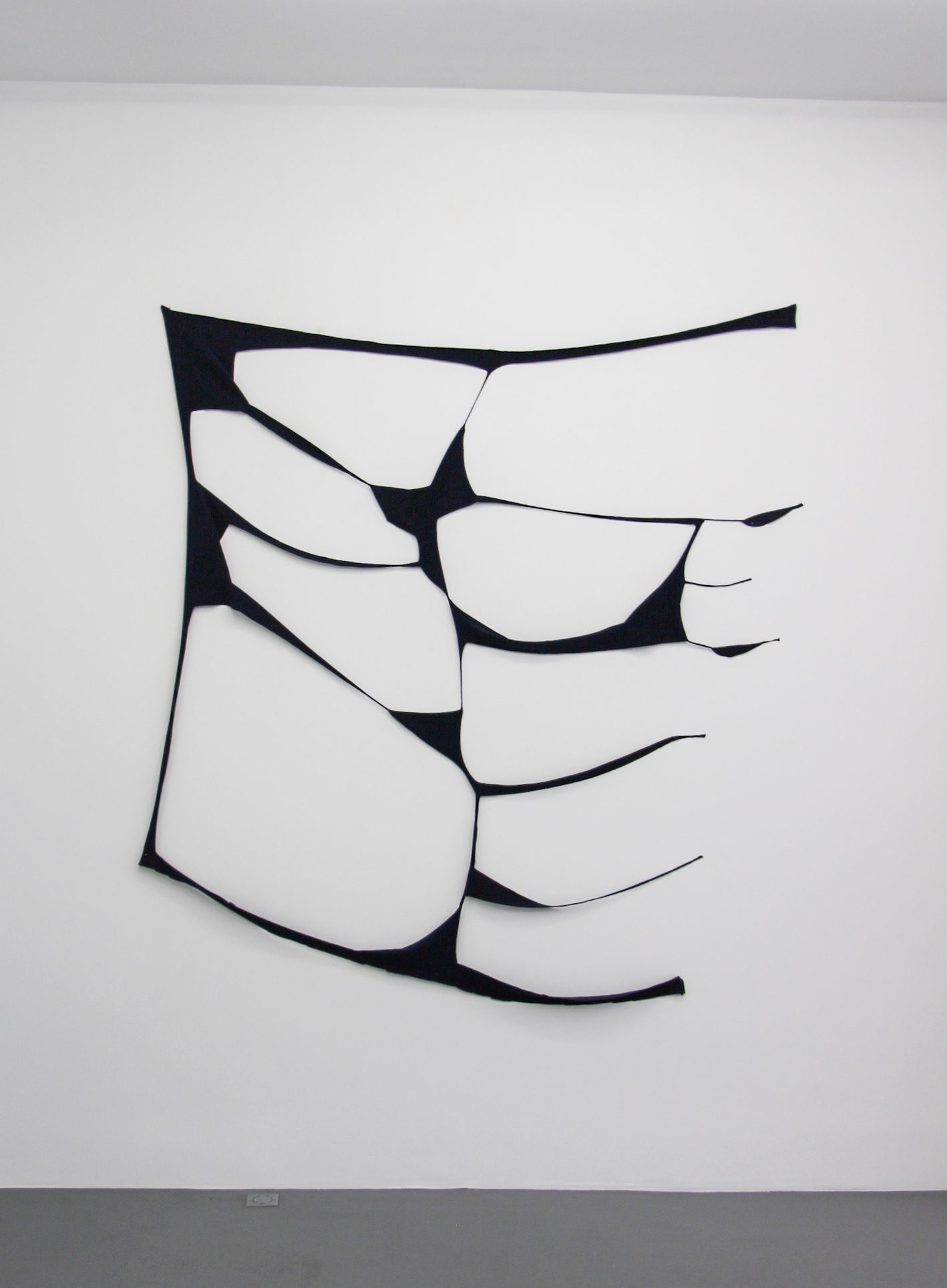
199 x 186,5 cm
Marion Baruch's work on remnants from the textile industry refers to a certain nomadism associated with materials and especially fabric. Her sculptures capture the negative of clothes, designed for human and consumption. Nevertheless, this negative she uses follows a very different path, and travels in another realm it was initially supposed to. Positive and negative, emptiness and fullness are intimately connected and complementary for the artist. In Mon corps où es-tu ?, she refers to one of her performances of the similar name carried out in 2009 when she practiced relational art. She had emptied out her apartment in order to fill the place differently by inviting strangers. For her 80th birthday, she furnished a space with boxes of pharmaceuticals, emphasizing the evolution of her aging body. Actually, relationships with others and the body are permanent in Marion Baruch's work.
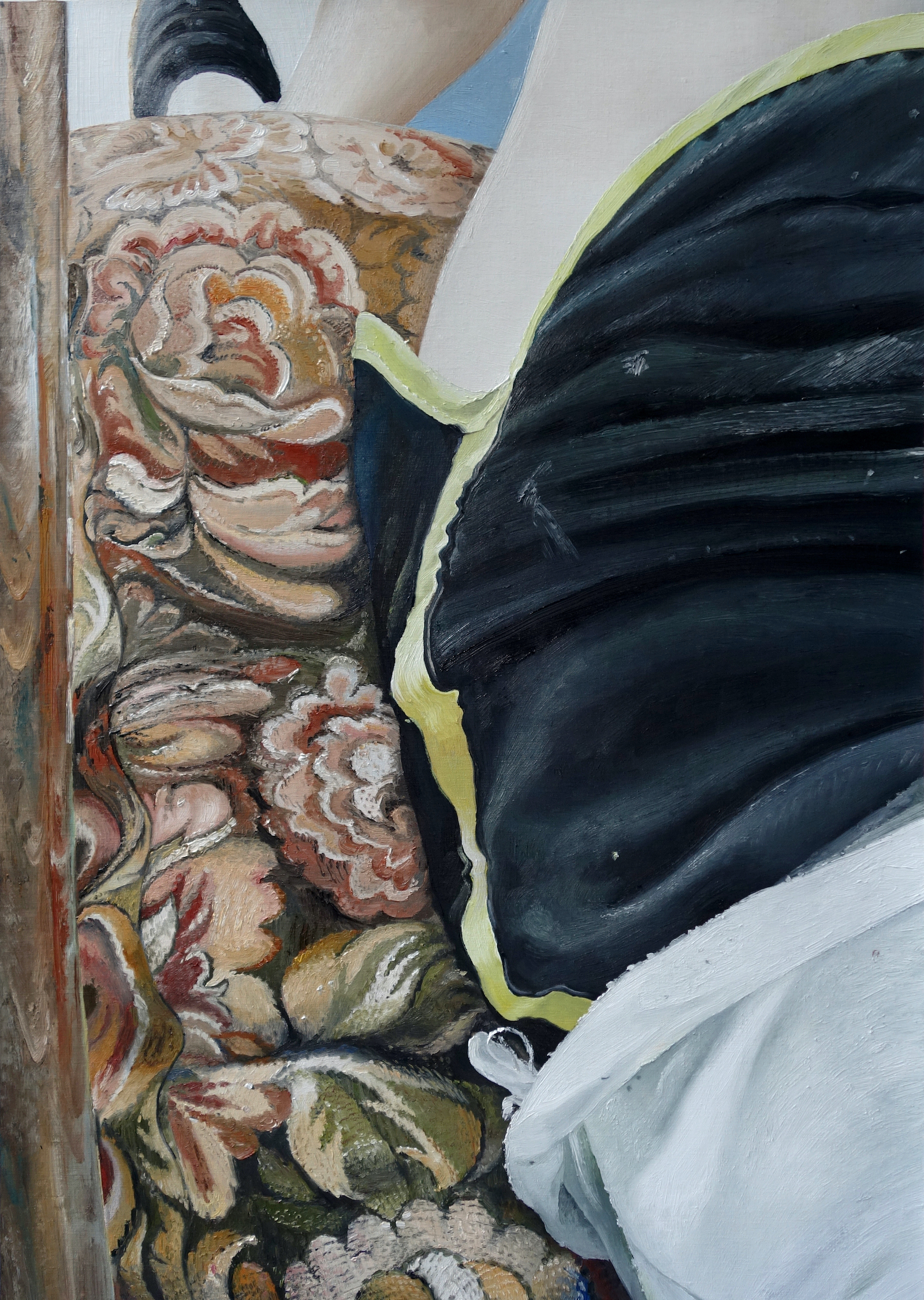
100 x 70 cm
Titled, dated, signed on the back
Motifs is a rare self-portrait by Mireille Blanc who takes us into the everyday life of her studio. The outdated and colourful forms of the cushion and the folds of the clothes become objects of painting. The overhanging perspective and the tight framing blur the perception of the subject. The context of the scene is evacuated to draw the eye to the singularity of the materials.

35 x 40 cm
Corps plunges the viewer into the folds of a woman's body, of which only the chest, belly and thighs are visible. The daring of the framing and the proximity of the model emphasize the pictorial material whose light and warm colors seem to animate the flesh. Nourished by the sensuality of the classical nudes' paintings, Florin Stefan delivers here an intimate painting, bathed in desire and mystery.
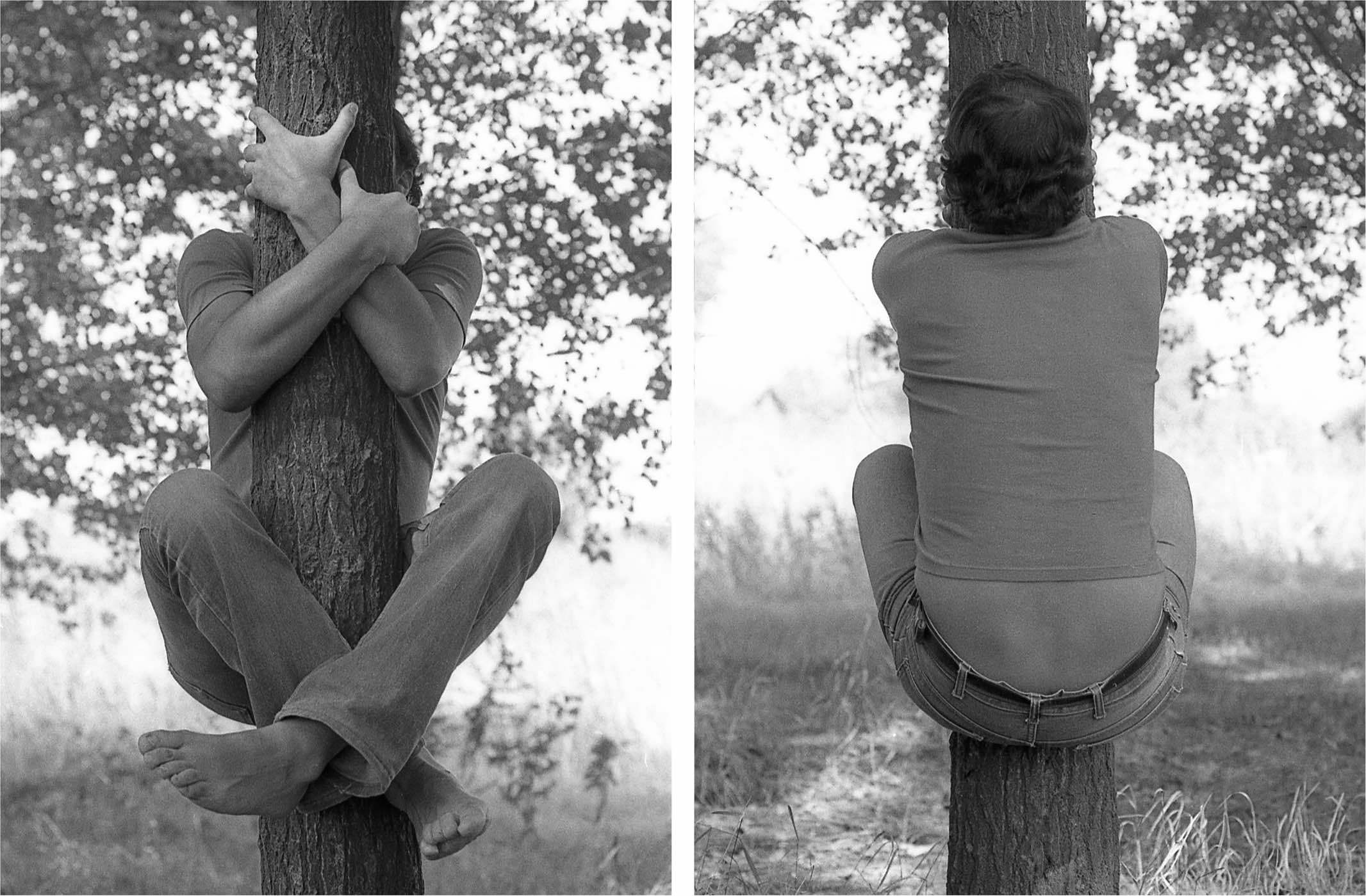
archival pigment print on Hahnemühle Photo Rag Baryta
Image: 60 x 82 cm
Paper: 62,5 x 90 cm
Frame: 62,5 x 90 x 3 cm
Body Sign #2 is part of a photography's series from a performance, staging different static positions. It has to be seen in a reflection about body postures, also presented in The gift or Body sign #1, and exhibits the actionism in the 1980s. Nowadays named performances, this type of artwork was called actions, which has undeniably a more powerful political connotation.

Image: 65 x 162 cm
Frame: 69 x 166,5 x 3 cm
With Signs (body work), Decebal Scriba reinvests the language of postures already undertaken in other series. Here, it acquires a ritual dimension, while echoing the socio-cultural context of Romania in the 1970s. The gestures, in a sort of reinvented sign language, refer to attitudes adopted during the Romanian communist regime: passivity, consolation, acceptance... Accordingly, the column hides the body to focus attention on the hands, vehicles of emotion and silent speech when expression was constrained.
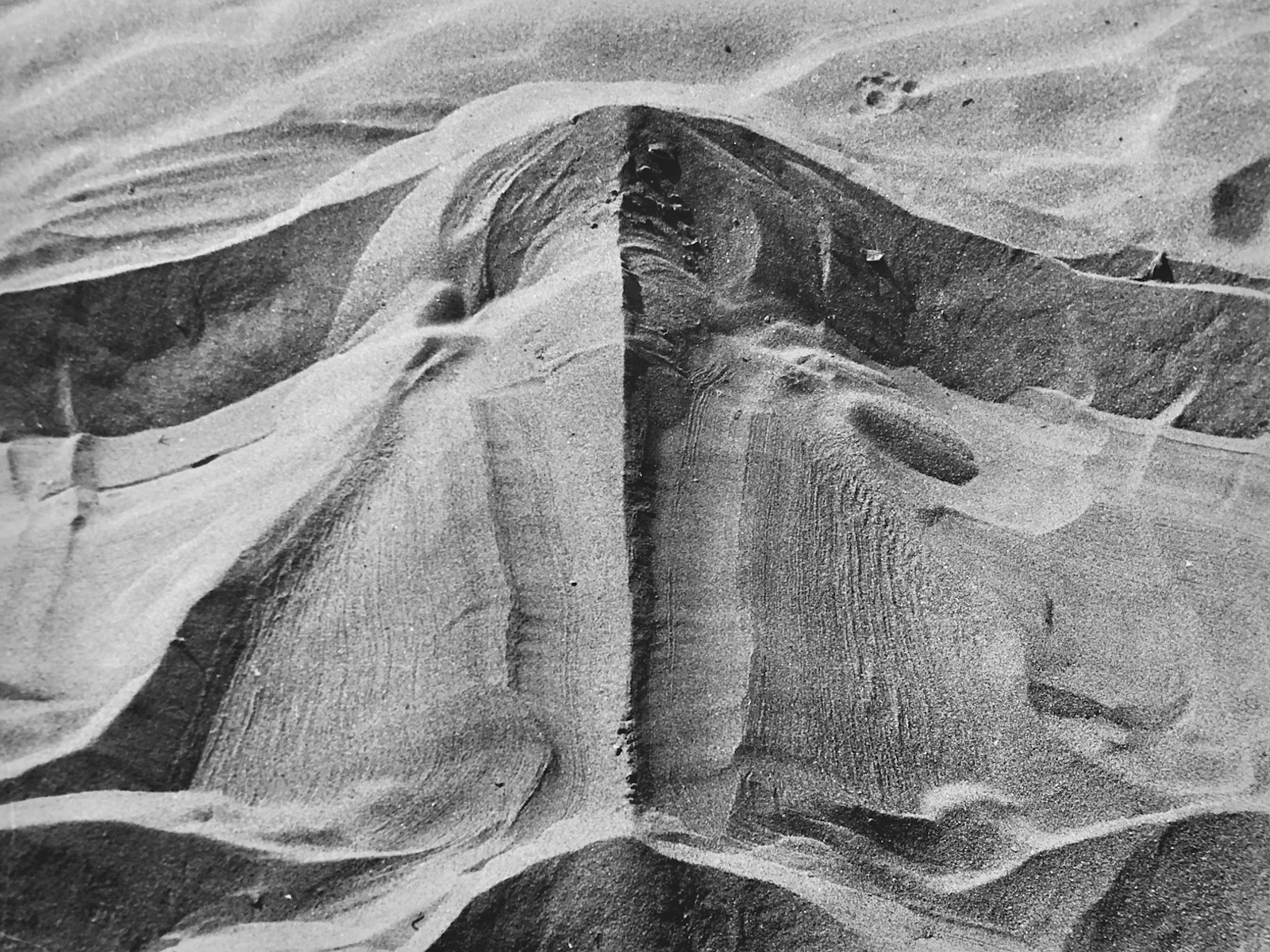
Image: 29,5 x 39 cm
The photographs series Sculptures apture the marks of a performance executed by Decebal Scriba on the sand. Results of the application of a minimalist formula, the forms obtained by the artist's movements produce a sculpture, expressing a metaphysical reflection on the relationship between nature and Art.
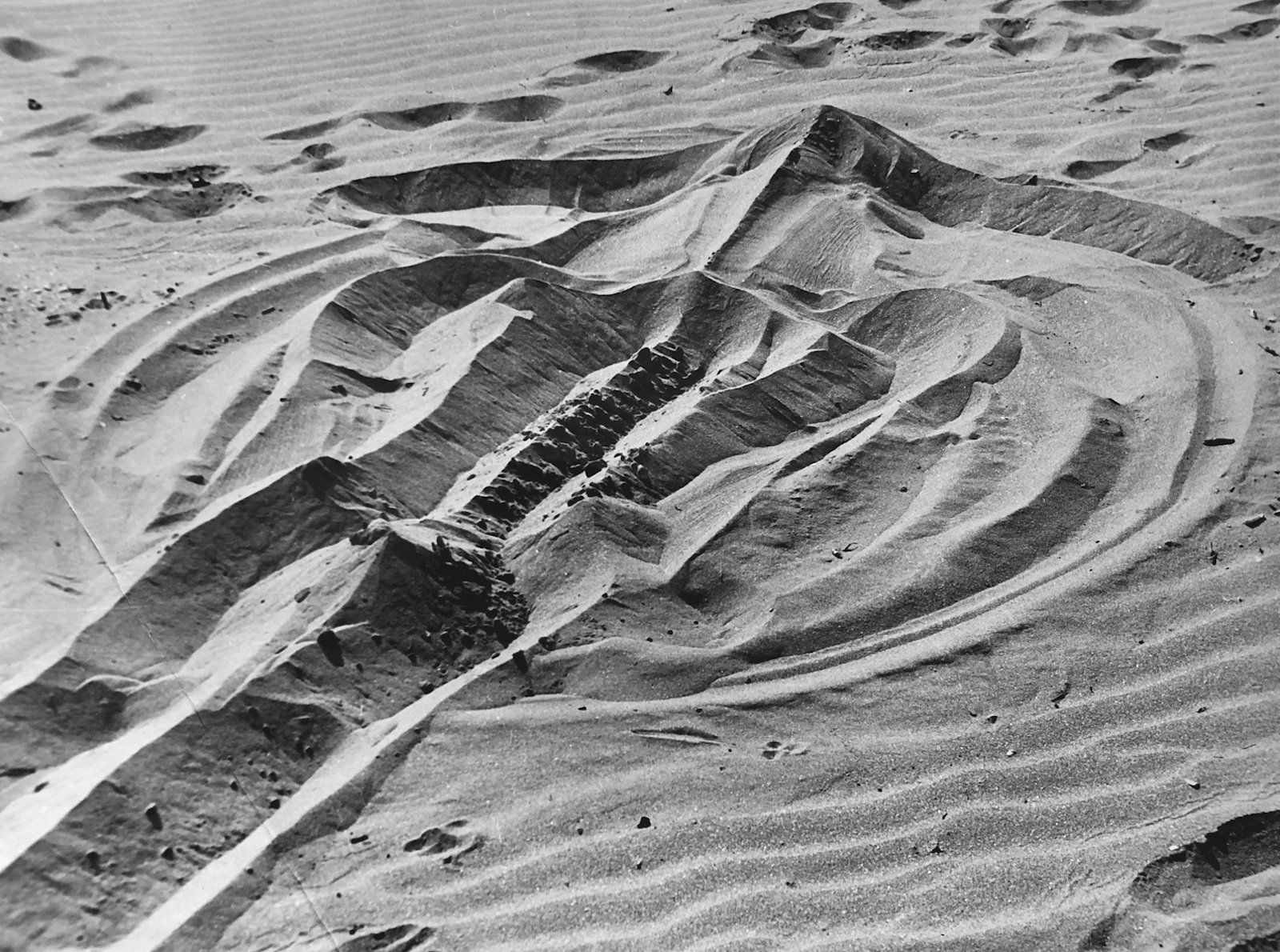
Image: 29,5 x 39 cm
The photographs series Sculptures capture the marks of a performance executed by Decebal Scriba on the sand. Results of the application of a minimalist formula, the forms obtained by the artist's movements produce a sculpture, expressing a metaphysical reflection on the relationship between nature and Art.
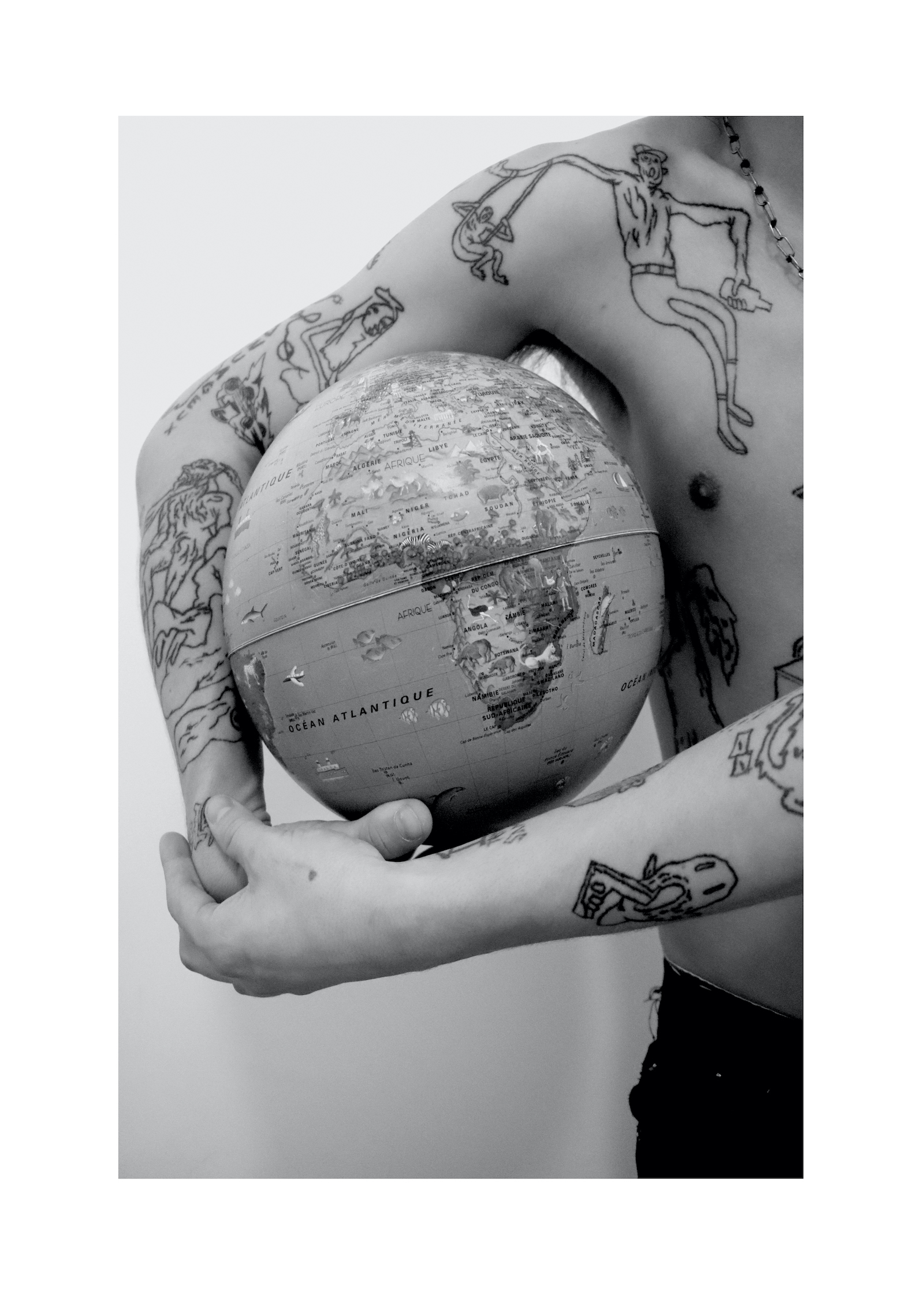
b&w photograph
Image: 42 x 30 cm
Frame: 46,2 x 34, 3 x 2,5 cm
In Le Monde entre leurs mains, Chourouk Hriech presents a series of black-and-white photographs that take tattooed youth as their subject. Each model holds a world’s map in his hands, deploying a particular gesture. The artist seeks to develop a dialogue between the images printed on the globe, and these drawings engraved on the skin, evoking the life adventures, dreams and ambitions of each model. These representations of the world inevitably escape them because the figures and symbols evolve with the times. Nevertheless, by choosing to assert themselves through tattoos, these young people defy time, future and reality. Thus, Chourouk Hriech pushes the practice of drawing further by multiplying the mediums to explore its potentialities and its materializations.
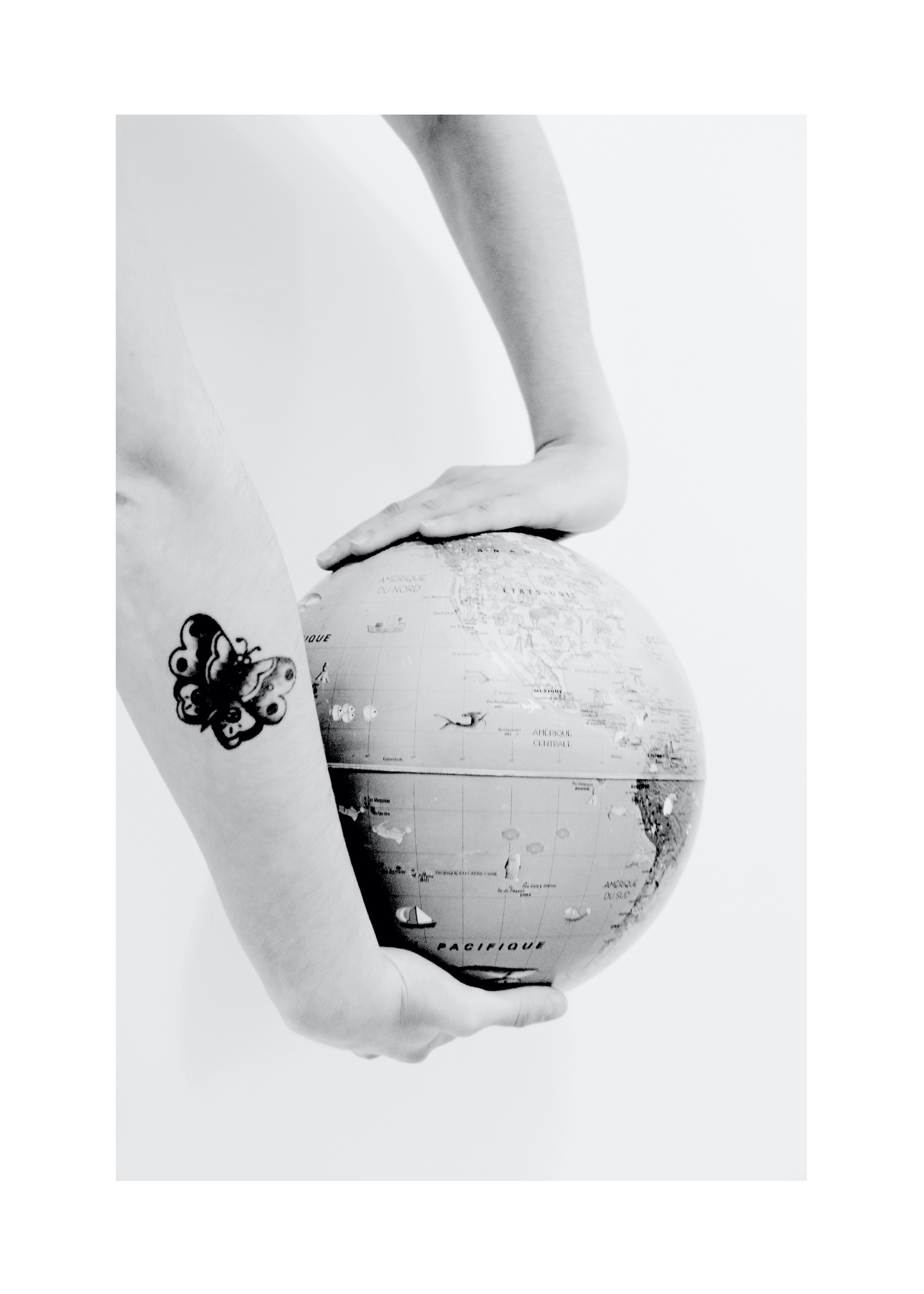
b&w photograph
Image: 42 x 30 cm
Frame: 46,2 x 34, 3 x 2,5 cm
In Le Monde entre leurs mains, Chourouk Hriech presents a series of black-and-white photographs that take tattooed youth as their subject. Each model holds a world?s map in his hands, deploying a particular gesture. The artist seeks to develop a dialogue between the images printed on the globe, and these drawings engraved on the skin, evoking the life adventures, dreams and ambitions of each model. These representations of the world inevitably escape them because the figures and symbols evolve with the times. Nevertheless, by choosing to assert themselves through tattoos, these young people defy time, future and reality. Thus, Chourouk Hriech pushes the practice of drawing further by multiplying the mediums to explore its potentialities and its materializations.

b&w photograph
Image: 42 x 30 cm
Frame: 46,2 x 34, 3 x 2,5 cm
In Le Monde entre leurs mains, Chourouk Hriech presents a series of black-and-white photographs that take tattooed youth as their subject. Each model holds a world's map in his hands, deploying a particular gesture. The artist seeks to develop a dialogue between the images printed on the globe, and these drawings engraved on the skin, evoking the life adventures, dreams and ambitions of each model. These representations of the world inevitably escape them because the figures and symbols evolve with the times. Nevertheless, by choosing to assert themselves through tattoos, these young people defy time, future and reality. Thus, Chourouk Hriech pushes the practice of drawing further by multiplying the mediums to explore its potentialities and its materializations.
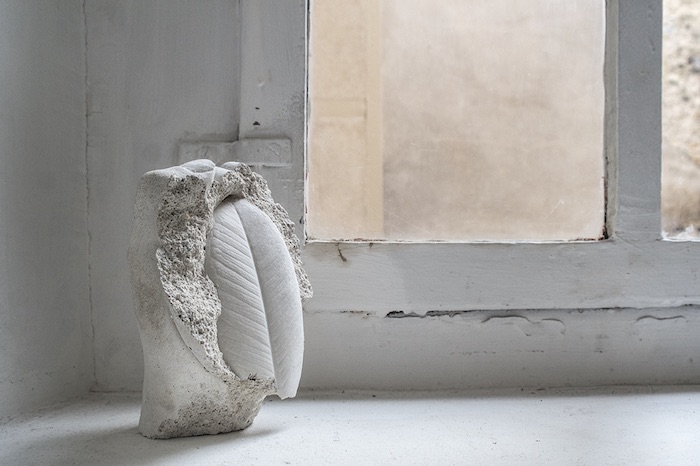
reconstituted stone
12 x 10 x 13 cm
©Augustin Dupuid
With these series of sculptures, Julien Discrit develops research where the materials and forms are intimately intertwined. He pursues two reflections very important in his work: one on the minerals, crystals and stones, and another on the spatial, geological and temporal relationship between humankind and its environment. Like future fossils, these sculptures of human hands holding rocks represent an almost archaic gesture of gripping. In a snapshot, they propose a "becoming stone" that plays with both materials - organic and mineral mixed together in yet another piece made of reconstituted stone - but also with artistic and historical practices in the sense of inventing a contemporary aesthetic from an artificial archaeological ruin. It thus reveals the aesthetic forms already given in our environment like these stones which are in themselves finished sculptural forms.
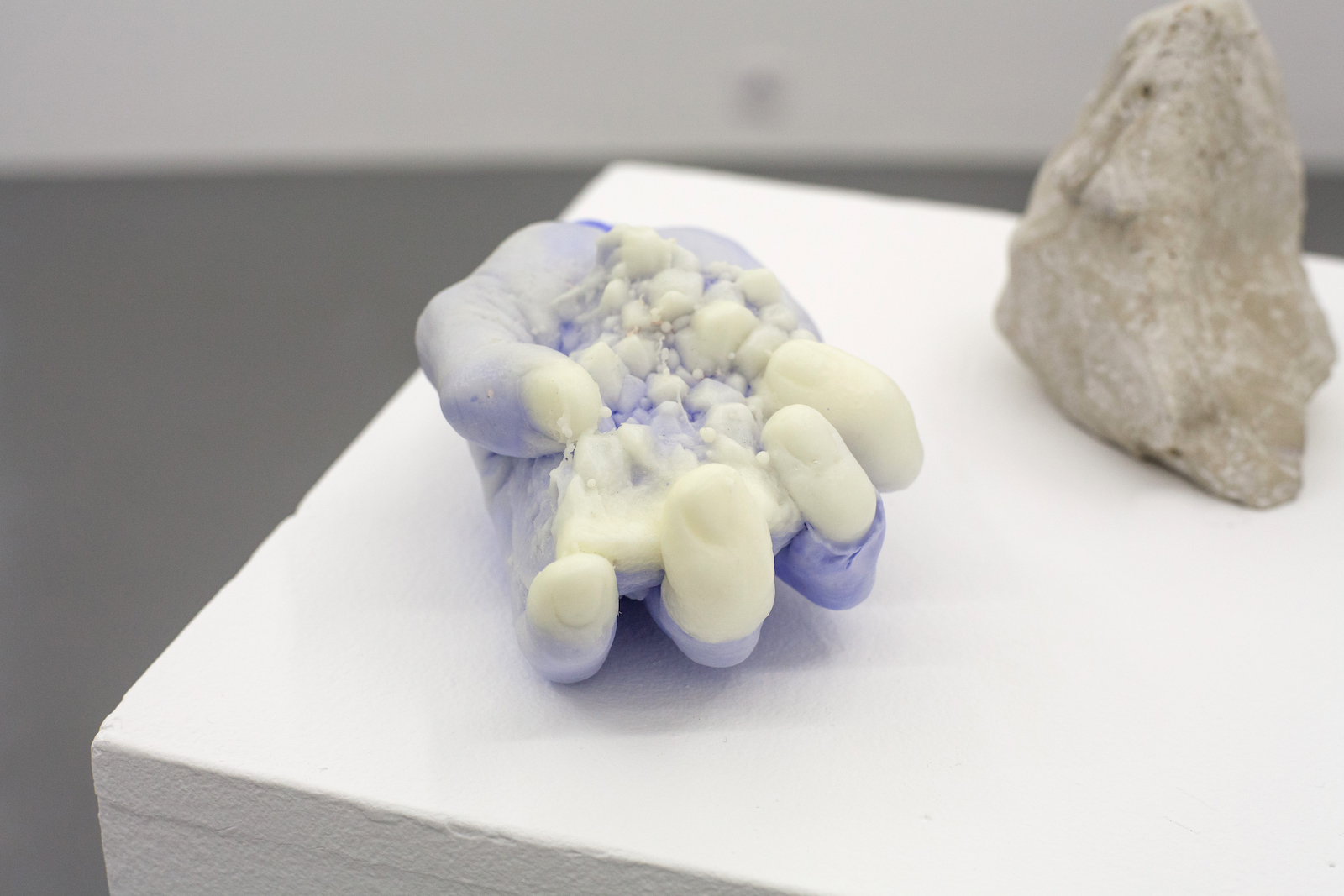
Reconstituted stone, polyurethane resin
9 x 19,5 x 11 cm
With these series of sculptures, Julien Discrit develops research where the materials and forms are intimately intertwined. He pursues two reflections very important in his work: one on the minerals, crystals and stones, and another on the spatial, geological and temporal relationship between humankind and its environment. Like future fossils, these sculptures of human hands holding rocks represent an almost archaic gesture of gripping. In a snapshot, they propose a "becoming stone" that plays with both materials - organic and mineral mixed together in yet another piece made of reconstituted stone - but also with artistic and historical practices in the sense of inventing a contemporary aesthetic from an artificial archaeological ruin. It thus reveals the aesthetic forms already given in our environment like these stones which are in themselves finished sculptural forms.
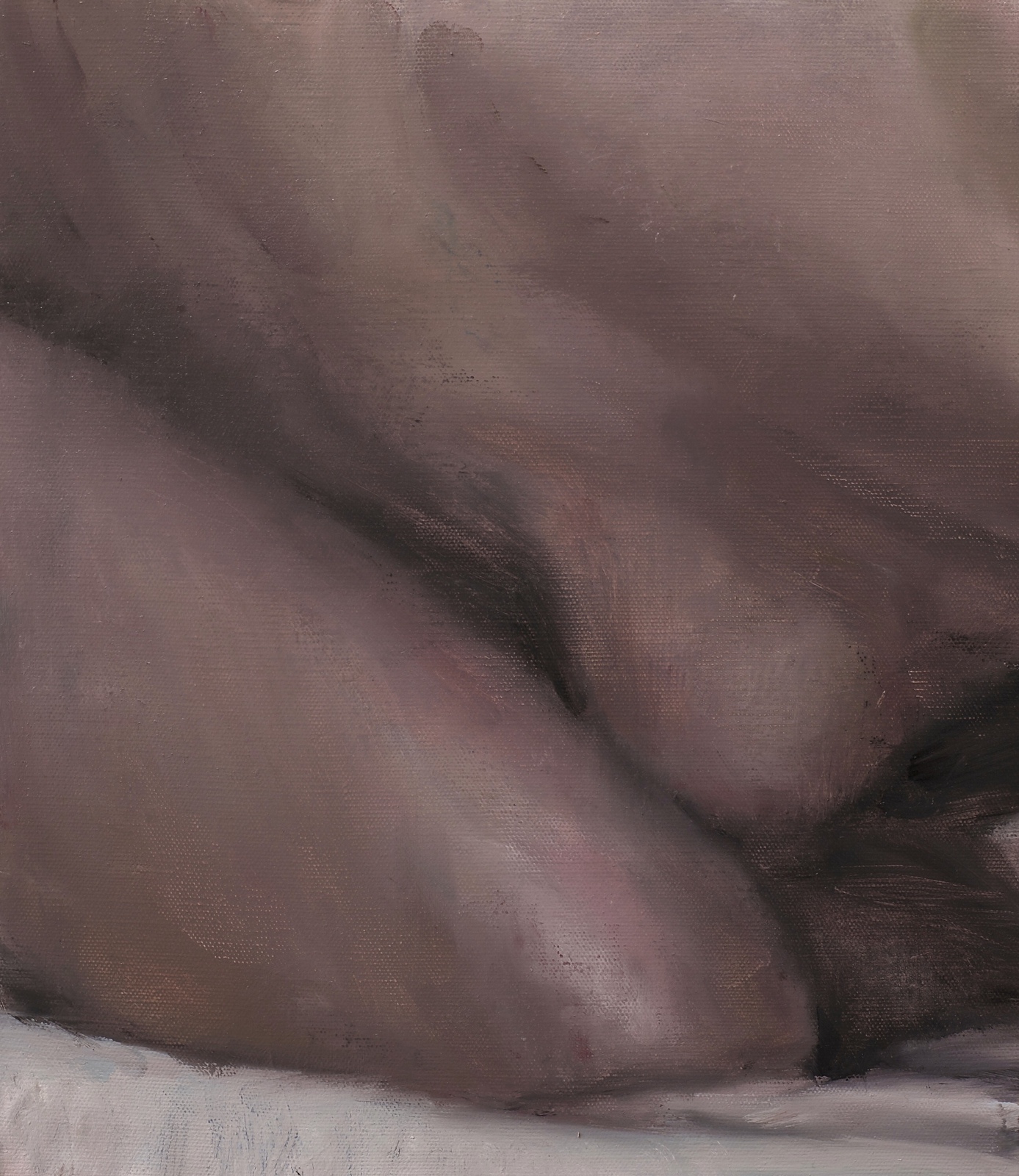
40 x 35 cm
Repos plunges the viewer into the folds of a woman's body, of which only the chest, belly and thighs are visible. The daring of the framing and the proximity of the model emphasize the pictorial material whose light and warm colors seem to animate the flesh. Nourished by the sensuality of the classical nudes' paintings, Florin Stefan delivers here an intimate painting, bathed in desire and mystery.
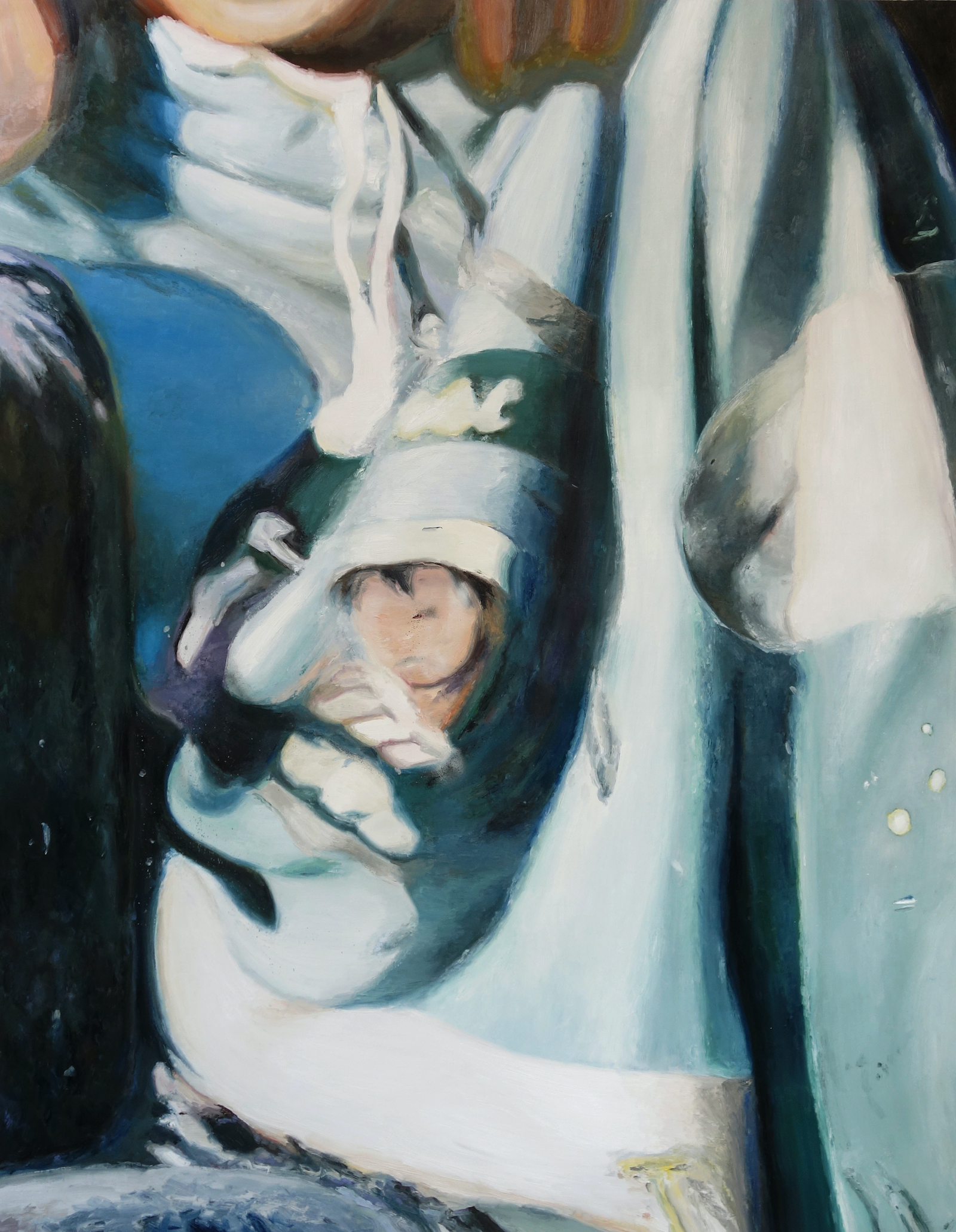
200 x 155 cm
Signed at the back
Sweatshirt (bouée) is part of a group of paintings produced from photographs of sweat-shirts. Very typical of her work, the artist transforms the picture by playing on the scale ratio to provide a different angle. By the inclination of the focal length towards a close perspective and by enlarging the picture, Mireille Blanc subtly fades the subject out of the image, and constructs a filter between the artwork and the one who is looking at it. By blurring the inscription and the image's context, often old-fashion and kitsch, she focuses on the vagueness of the elements treated and plays on the enigmatic nature of subjects she encounters.
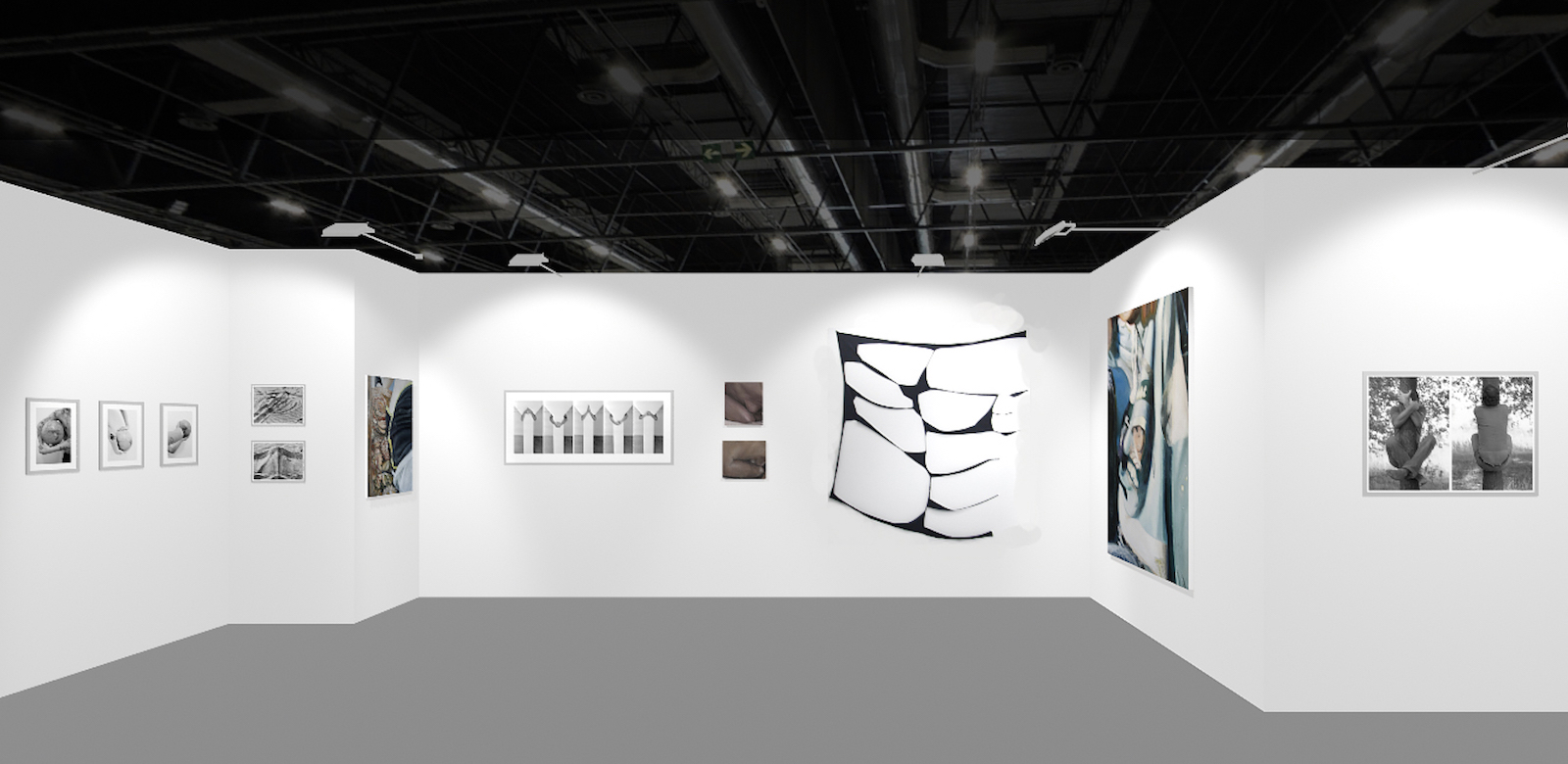
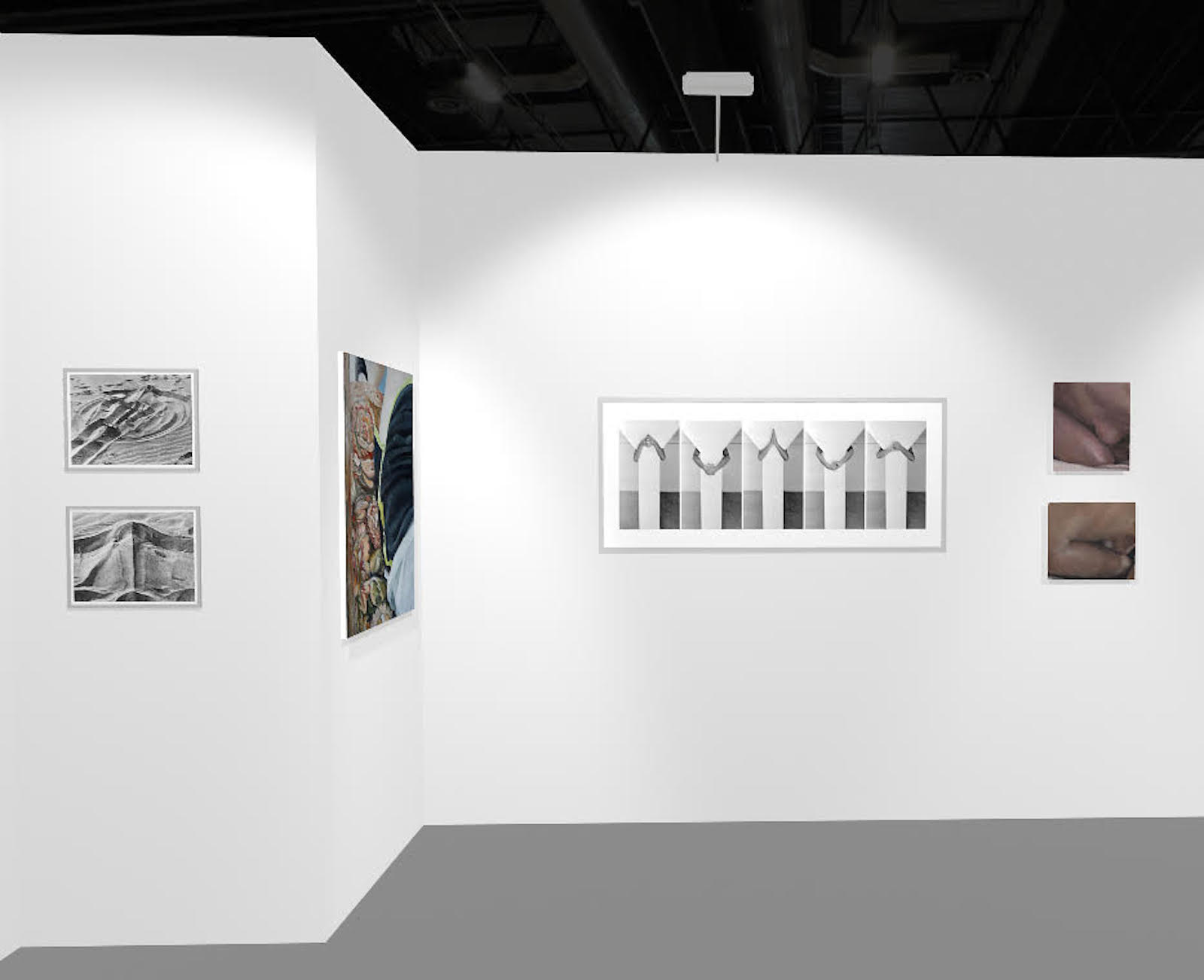
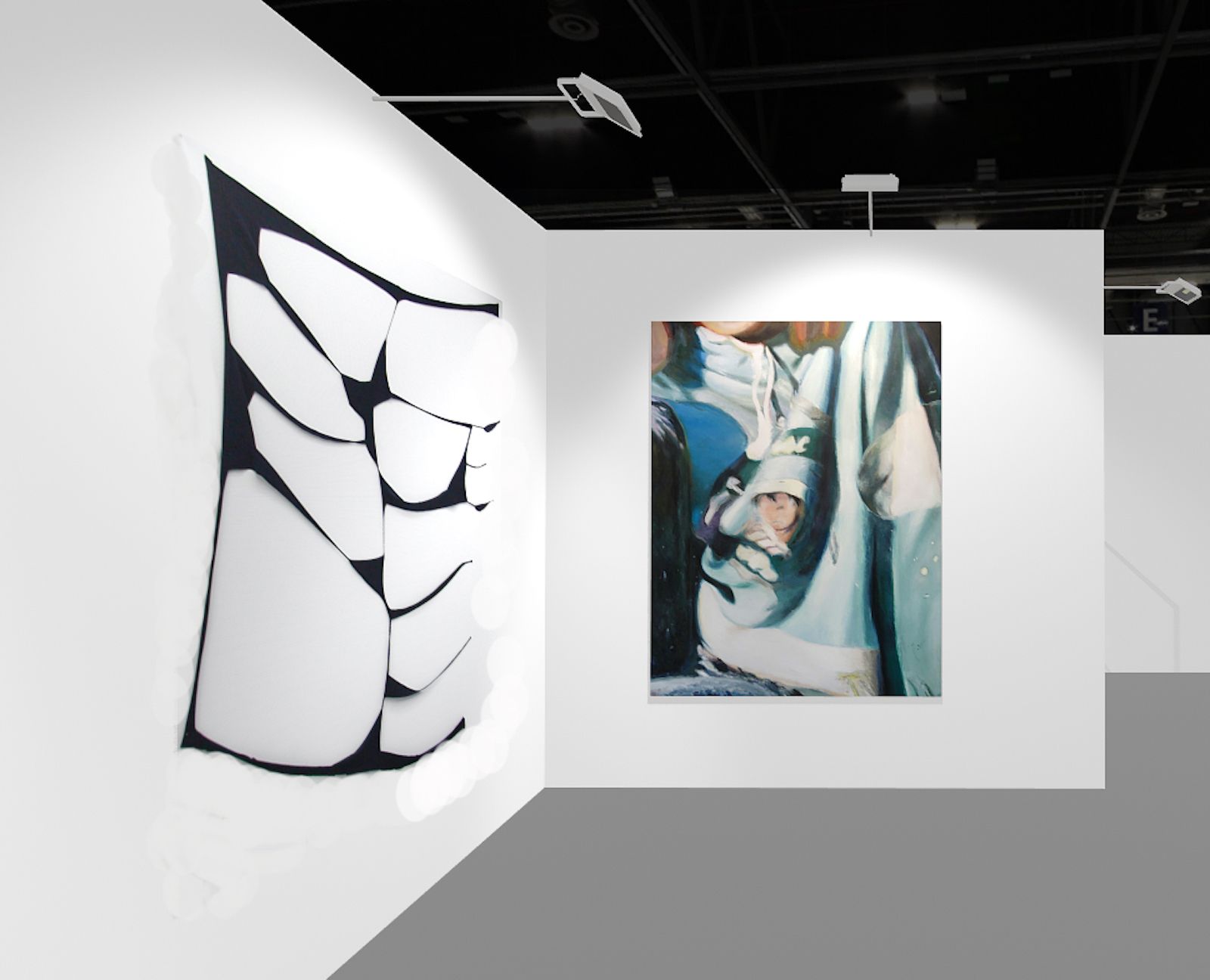
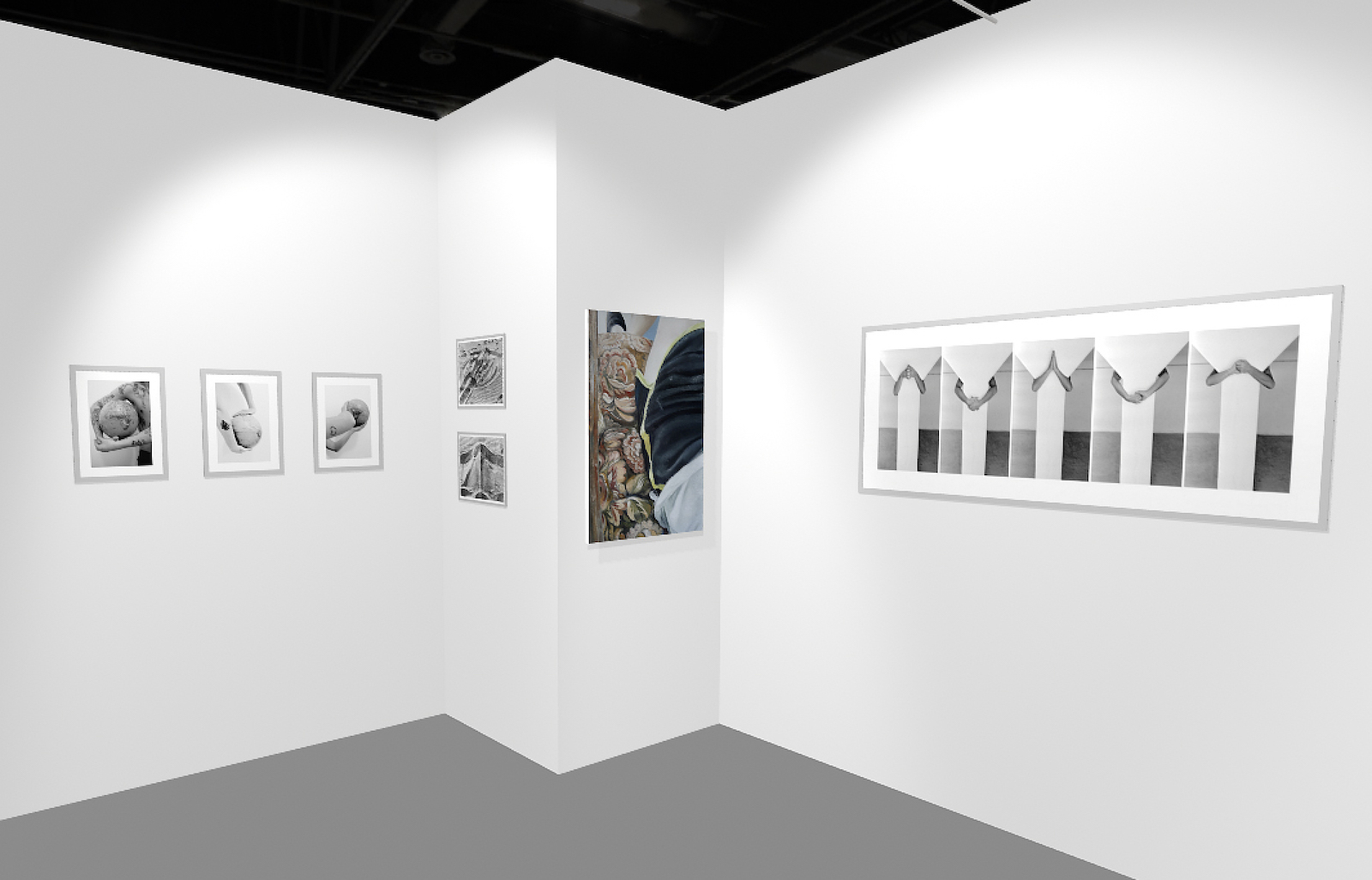

While waiting for the reopening of the galleries and the pleasure of discovering Massinissa Selmani's solo exhibition, we regularly offer you virtual thematic exhibitions.
Since the beginning of the pandemic, we have been particularly deprived of physical contact with the bodies of others. For our fourth and last virtual exhibition, we have therefore chosen to show you works that speak of the body, its flesh, its light, its fragility, its movements or its absence. The title of the exhibition refers to a work by Marion Baruch entitled "Mon corps où es-tu ?"(Where are you, my body?).
With works by Marion Baruch, Mireille Blanc, Julien Discrit, Chourouk Hriech, Decebal Scriba and Florin Stefan.